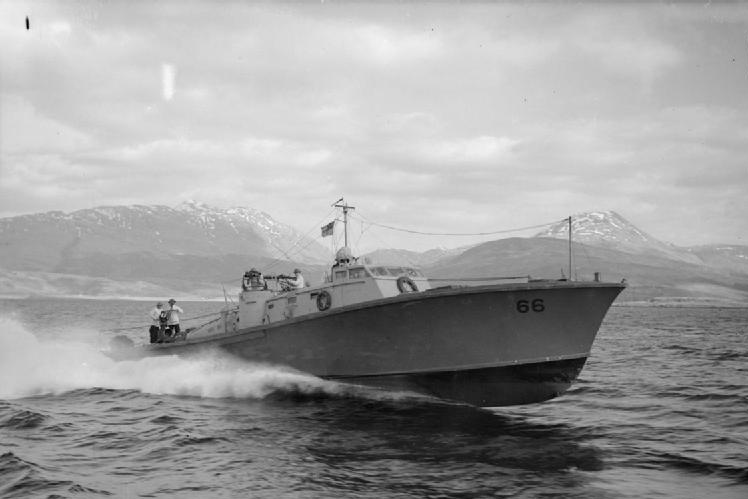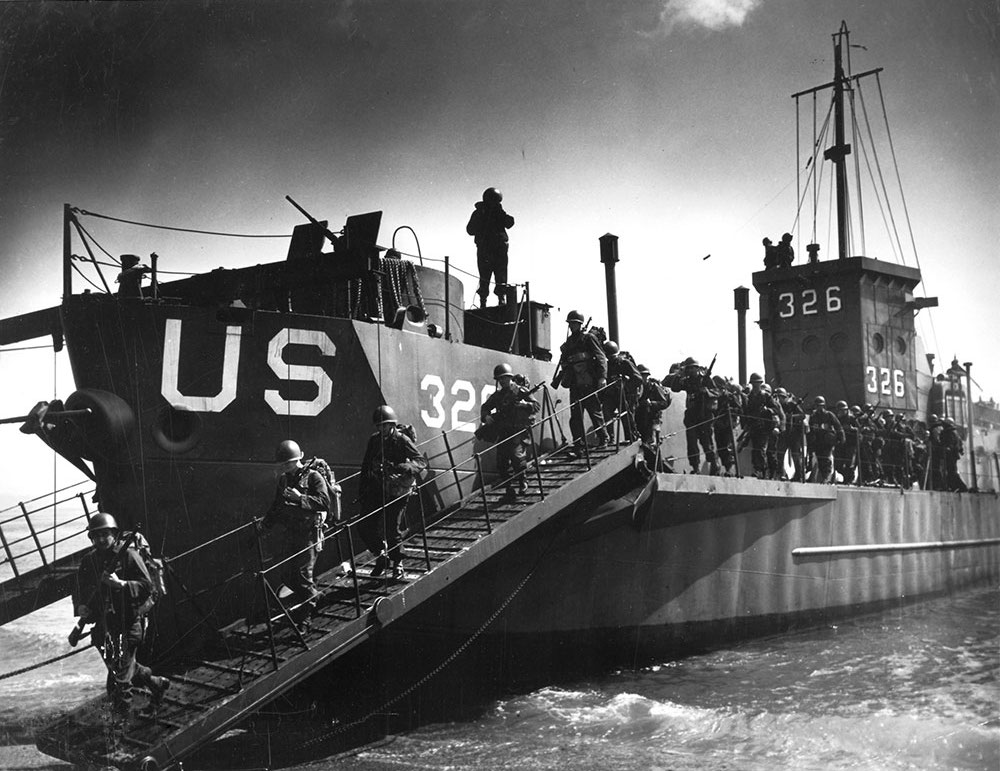|
Fairmile Marine
Fairmile Marine was a British boat building company founded in 1939 by the car manufacturer Noel Macklin. Macklin used the garage at his home at Cobham Fairmile in Surrey for manufacturing assembly which is why the boats he designed came to be called Fairmiles. As a former Royal Horse Artillery and Royal Navy Volunteer Reserve officer, he was inspired to turn his talents and his technical staff to producing boats after reading an article by Vice-Admiral Cecil Vivian Usborne. After his first designs were accepted and ordered by the Admiralty, Macklin found he had insufficient capital. To solve the problem the Fairmile company became an agency of the Admiralty with Usborne as one of the directors. As a result, the company carried out business without turning a profit, the staff being in effect part of the civil service. Many Fairmile Bs were built in Commonwealth countries: 80 in Canada, 12 in New Zealand, and six in South Africa. Boats designed References * Lambert, J ... [...More Info...] [...Related Items...] OR: [Wikipedia] [Google] [Baidu] |
Noel Macklin
Sir (Albert) Noel Campbell Macklin (28 October 1886 – 1946) was an innovative British car maker and boat designer. He founded Eric-Campbell in 1919, Silver Hawk in 1920, Invicta in 1925 and Railton in 1933. In 1939 he founded Fairmile Marine and supplied boats to the Royal Navy throughout World War II, for which effort he was honoured with a knighthood. He was the father of sports car and Formula One racing driver Lance Macklin. Early life and education Macklin was born in Western Australia, the eldest son of Charles Campbell Macklin (1866–1918), barrister, and his wife, Ada Louisa, née Lockyer (1863/4–1935). The family had moved to Wimbledon, London by 1891 and Macklin was educated at Eton College. He was a successful amateur jockey; from 1908-1910 he represented England and the Princes Ice Hockey Club at ice hockey and in 1909 he raced a Mercedes at Brooklands. In February 1914 he led an expedition to film big game in the Sudan. Career World War 1 Macklin was comm ... [...More Info...] [...Related Items...] OR: [Wikipedia] [Google] [Baidu] |
Motor Gun Boat
The motor gun boat (MGB) was a small, high-speed British military vessel of the Second World War, which was armed with a mix of guns, in contrast to the physically similar motor torpedo boat (MTB), whose main offensive weapon were torpedoes. The small size of the MGBs, and their high speed, made them difficult targets for German E-boats, though, like their opponents, they were limited by heavy weather, because they did not provide a stable-enough platform to aim the guns. The large number of guns meant the crew was relatively large, numbering as high as thirty men on the largest boats. Description MGBs were extremely heavily armed for vessels of their size. Early MGBs were, nevertheless, small boats, being based on Motor Anti-Submarine Boats of 63-70 feet in length; these would later be considered 'short' boats by Coastal Forces. These were mostly equipped with one heavy weapon and numerous lighter guns. The later 71.5-feet short MGBs would sport two heavy weapon locations ... [...More Info...] [...Related Items...] OR: [Wikipedia] [Google] [Baidu] |
Companies Based In Surrey
A company, abbreviated as co., is a legal entity representing an association of people, whether natural, legal or a mixture of both, with a specific objective. Company members share a common purpose and unite to achieve specific, declared goals. Companies take various forms, such as: * voluntary associations, which may include nonprofit organizations * business entities, whose aim is generating profit * financial entities and banks * programs or educational institutions A company can be created as a legal person so that the company itself has limited liability as members perform or fail to discharge their duty according to the publicly declared incorporation, or published policy. When a company closes, it may need to be liquidated to avoid further legal obligations. Companies may associate and collectively register themselves as new companies; the resulting entities are often known as corporate groups. Meanings and definitions A company can be defined as an "artificial per ... [...More Info...] [...Related Items...] OR: [Wikipedia] [Google] [Baidu] |
Borough Of Elmbridge
Elmbridge is a local government district with borough status in Surrey, England. Its principal towns and villages are Esher, Cobham, Walton-on-Thames, Weybridge and Molesey. It directly borders the London Borough of Richmond upon Thames and the London Royal Borough of Kingston upon Thames. Some areas of the borough form a continuation of the Greater London Built-up Area, formerly falling into the Metropolitan Police District. History of Local Authority and politics The borough shares a long boundary with Greater London—the London Borough of Richmond upon Thames to the north, with which the border is formed by the Thames itself, and the Royal Borough of Kingston upon Thames to the east. Running anticlockwise from the northwest, Elmbridge borders the Surrey boroughs of Spelthorne, Runnymede, Woking, Guildford and Mole Valley. Elmbridge is almost entirely within the bounds of the M25 motorway. There is only one civil parish, Claygate, while the remainder of the area has two r ... [...More Info...] [...Related Items...] OR: [Wikipedia] [Google] [Baidu] |
British Coastal Forces Of World War II
Coastal Forces was a division of the Royal Navy initially established during World War I, and then again in World War II under the command of Rear-Admiral, Coastal Forces. It remained active until the last minesweepers to wear the "HM Coastal Forces" cap tally were taken out of reserve in 1968. On 21 May 2020, Ministerial approval for the change in name from 1st Patrol Boat Squadron to Coastal Forces Squadron was given. It encompasses the Archer-class patrol vessels and the Batch 1 River-class offshore patrol vessels and are responsible for UK EEZ Protection and Patrol. History Predecessor The Royal Navy had previously operated flotillas of small torpedo- and depth-charge-armed craft ( coastal motor boats) during World War I (1914-1918). They operated as often in action against the enemy coast as in defence of British coastal areas. Establishment The first post WWI motor torpedo boats built for the Royal Navy were built by the British Powerboat Company at Hythe, Southampton ... [...More Info...] [...Related Items...] OR: [Wikipedia] [Google] [Baidu] |
British Power Boat Company
The British Power Boat Company was a British manufacturer of motor boats, particularly racing boats and later military patrol boats. History The company was formed on 30 September 1927 when Hubert Scott-Paine bought and renamed the Hythe Shipyard with the intention of transforming it into one of the most modern mass production boat building yards in the country. Together with his chief designer, Fred Cooper, the company produced the 26-foot single step hydroplane racing boat Miss England I. Later after Fred Cooper had left, Hubert Scott-Paine designed Miss Britain III. From 1930 the British Power Boat Company supplied seaplane tenders to the Air Ministry, commencing with RAF200, a 37-footer. The trials of this and other boats was carried out by T. E. Shaw (T. E. Lawrence) on behalf of the Royal Air Force, and he and Scott-Paine worked together over the next few years. These tenders were powered by twin 100bhp Meadows petrol engines giving a maximum speed of 29 knots (some o ... [...More Info...] [...Related Items...] OR: [Wikipedia] [Google] [Baidu] |
Vosper & Company
Vosper & Company, often referred to simply as Vospers, was a British shipbuilding company based in Portsmouth, England. History The Company was established in 1871 by Herbert Edward Vosper, concentrating on ship repair and refitting work. By the turn of the century, Vosper was prospering as a general-purpose builder of small craft, boilers and marine engines, for which they had made a name for themselves as a producer of reliable designs. In the lean times after World War I, they concentrated mainly on ship repair to survive. By the early 1930s, the company began to concentrate on high speed naval craft, yachts and power boats, for which they would become renowned. In 1936 they became listed as a public company, known as Vosper, Limited, at which time they moved to a new yard at Portchester. They built Sir Malcolm Campbell's water speed record breaking ''Bluebird K4'', reaching 141.74 mph in 1939. Vosper would become famous as the builder of small (60 to 70-foot) un-step ... [...More Info...] [...Related Items...] OR: [Wikipedia] [Google] [Baidu] |
John Lambert (naval Historian)
John Lambert (1937 – January 11, 2016) was a naval illustrator and historian.Lambert, John 1937- ''WorldCat''. Accessed 29 December 2020. He specialised in naval boats up to destroyer size. The information he presented, and his detailed drawings of s and their weapons systems, w ... [...More Info...] [...Related Items...] OR: [Wikipedia] [Google] [Baidu] |
Landing Craft Support
The Landing Craft, Support (Large) were two distinct classes of amphibious warfare vessels were used by the United States Navy (USN) in the Pacific and the Royal Navy in World War II. The USN versions which were later reclassified Landing Ship Support, Large also performed radar picket duty and fire fighting. US Navy Vessels The original designation for the ships was LCS(L)(3), which stood for "Landing Craft Support (Large) Mark 3". In 1949 the class was reclassified to "Landing Ship Support, Large" (LSSL). The United States Navy had to have the designation LCS(L) because there was also a smaller class named LCL, that were built mainly for rescue and smoke laying during amphibious operation. Design and manufacture A total of 130 were made. Three different ship building yards did the construction: George Lawley & Son ( Neponset, Massachusetts); Commercial Iron Works (Portland, Oregon); and Albina Engine Works (Portland, Oregon). The hull was the same as the Landing Craft In ... [...More Info...] [...Related Items...] OR: [Wikipedia] [Google] [Baidu] |
Landing Craft Infantry
The Landing Craft Infantry (LCI) were several classes of landing craft used to land large numbers of infantry directly onto beaches during the Second World War. They were developed in response to a British request for seagoing amphibious assault ships capable of carrying and landing substantially more troops than their smaller Landing Craft Assault (LCA). The result was a small steel ship that could land 200 men, traveling from rear bases on its own bottom at a speed of up to 15 knots. Some 923 were built starting in 1943, serving in both the Pacific and European theaters, including a number that were converted into heavily armed beach assault support ships. The LCI(L) supplemented the small LCAs/ LCVPs as a way to get many troops ashore before a dock could be captured or built. As such, they were the largest dedicated beachable infantry landing craft (the larger Landing Ship Infantry (LSI) was a transporter for men and small craft such as the British LCA) in the Allied inventor ... [...More Info...] [...Related Items...] OR: [Wikipedia] [Google] [Baidu] |
Fairmile H Landing Craft
The Fairmile H Landing Craft were British landing craft of the Second World War. Initially designed for commando type raids from a base in Britain as a way of probing enemy defenses and tying down additional troops, some were converted into fire support vessels. Two variants were developed: ;The Fairmile H LCI (S) This was the Landing Craft Infantry (Small) "LCI(S)" boat. ;The Fairmile H LCS (L) This was a Landing Craft Support (LCS) boat fitted with extra weapons to give fire support to landing craft particularly in being able to provide some anti-tank capability. This was achieved by the simple expediency of mounting a tank turret complete with its gun on the forward deck. The usual Fairmile construction techniques were used with all items prefabricated and supplied in kit form to boatyards for assembly and fitting out. See also *Fairmile A motor launch *Fairmile B motor launch *Fairmile C motor gun boat *Fairmile D motor torpedo boat The Fairmile D motor torpedo b ... [...More Info...] [...Related Items...] OR: [Wikipedia] [Google] [Baidu] |





